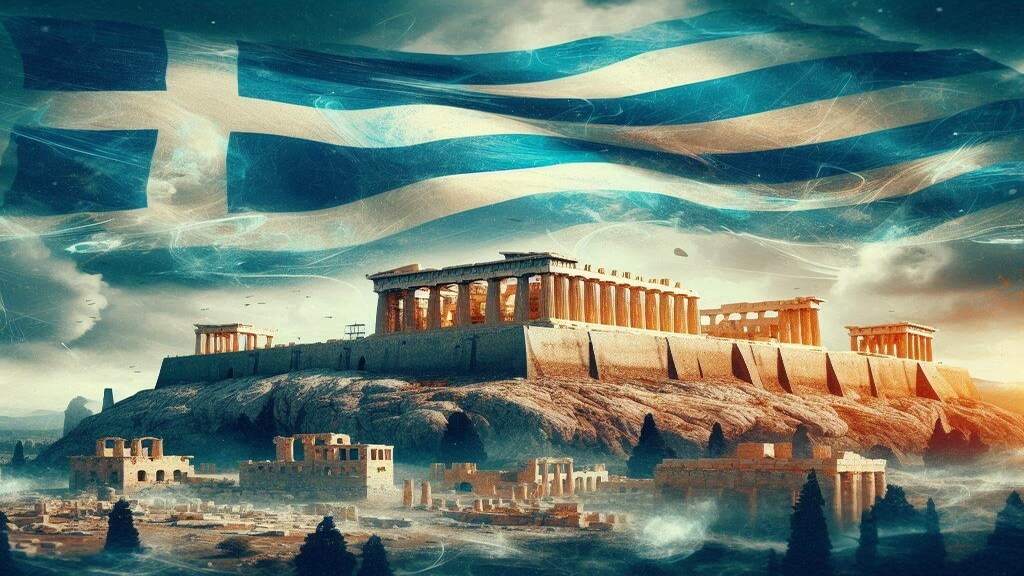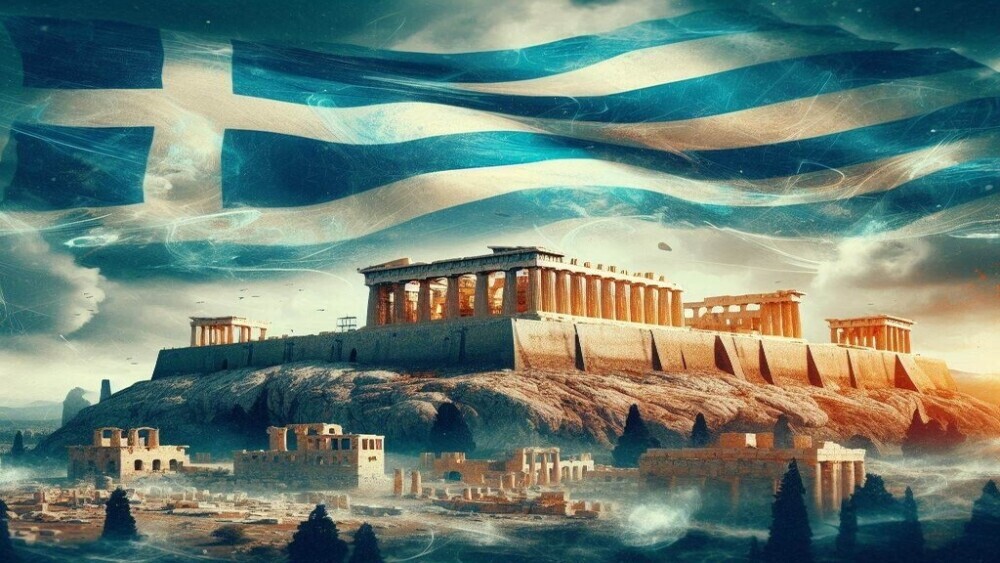
Greece, the birthplace of Western civilization, is a treasure trove of history, culture, and natural beauty. From ancient ruins and stunning islands to majestic mountains and idyllic beaches, Greece offers endless travel experiences. Whether you’re drawn to its mythology, fascinated by its history, or simply looking for an escape to the sun, here are ten must-visit places in Greece.
1) Athens: The Cradle of Western Civilization
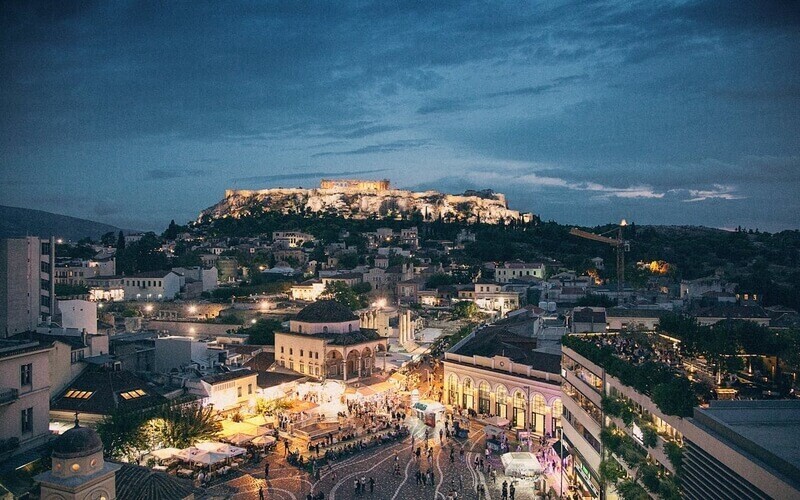
(Photo by jimmy teoh on Pexels)
Athens, the capital of Greece, is a city where ancient history meets modern life. It’s home to some of the most important archaeological sites in the world, with the Acropolis being the crown jewel. The Acropolis sits high above the city, with its iconic Parthenon temple, a symbol of ancient Greek civilization. The site offers stunning panoramic views of Athens and provides a glimpse into Greece’s fascinating history.
Besides the Acropolis, the city is filled with ancient ruins, such as the Temple of Olympian Zeus and the Ancient Agora, where philosophers like Socrates once walked. Athens also boasts world-class museums like the Acropolis Museum and the National Archaeological Museum, which house priceless artifacts from the ancient world.
For a taste of modern Athens, take a walk through the lively neighborhoods of Plaka and Monastiraki, where you’ll find narrow streets lined with traditional tavernas, souvenir shops, and local markets.
Must-Do Activities:
- Visit the Acropolis and the Parthenon for a deep dive into ancient Greek history.
- Stroll through Plaka, Athens’ oldest neighborhood, and enjoy local cuisine.
- Explore the exhibits at the Acropolis Museum and National Archaeological Museum.
2) Santorini: The Iconic Greek Island
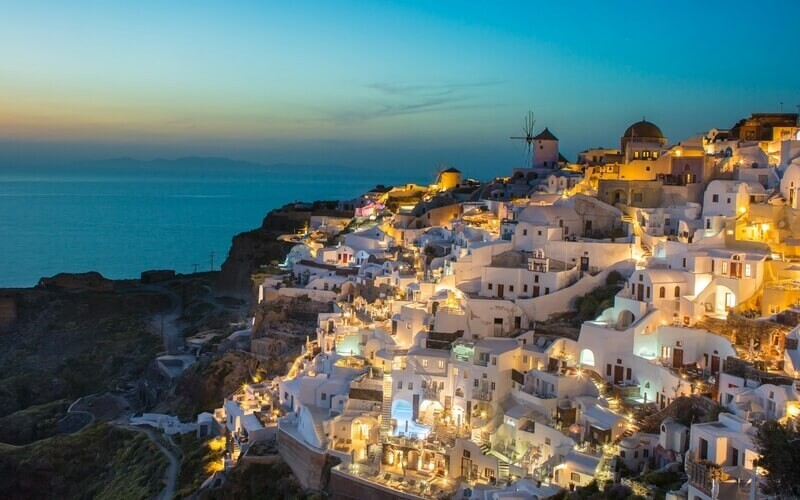
(Photo by James Ting on Unsplash)
Perhaps the most famous of all the Greek islands, Santorini is known for its whitewashed buildings, blue-domed churches, and stunning sunsets. Located in the Aegean Sea, this volcanic island offers breathtaking views of the caldera, a crescent-shaped bay formed by a massive volcanic eruption thousands of years ago.
The island’s capital, Fira, and the picturesque village of Oia are perched on cliffs overlooking the caldera, offering some of the best sunset views in the world. Wander through the charming streets of Oia, lined with boutiques, cafes, and art galleries, or explore Fira’s lively bars and restaurants.
Santorini is also home to beautiful beaches with unique volcanic sand, such as Red Beach and Kamari Beach. Additionally, the island offers a rich history with archaeological sites like Akrotiri, a Minoan Bronze Age settlement preserved in volcanic ash, often referred to as the “Pompeii of the Aegean.”
Must-Do Activities:
- Watch the sunset from Oia, considered one of the best sunset spots in the world.
- Visit the ancient ruins of Akrotiri to explore the island’s archaeological history.
- Relax on the volcanic sands of Red Beach or Kamari Beach.
3) Mykonos: The Party Island
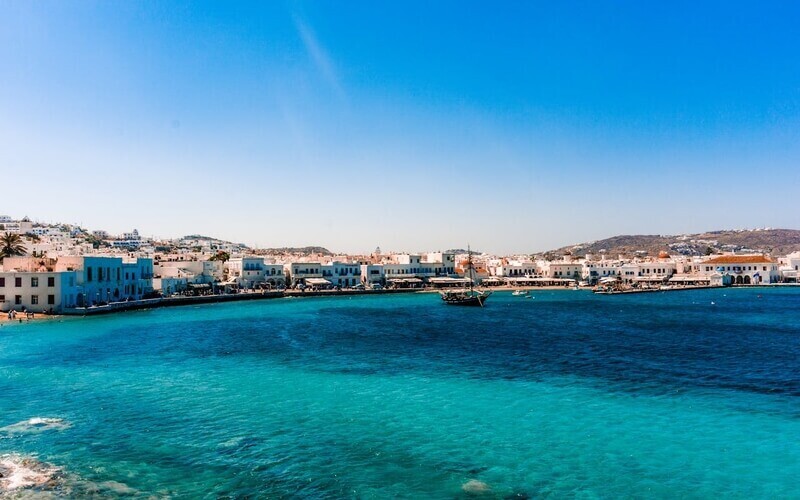
(Photo by Luke Webb on Pexels)
Mykonos is synonymous with vibrant nightlife, luxurious beach clubs, and beautiful beaches. Known as the party island of Greece, it attracts visitors from around the world looking for an exciting blend of beach relaxation by day and high-energy parties by night.
The island’s main town, Mykonos Town (Chora), is a labyrinth of narrow streets filled with boutique shops, traditional tavernas, and chic bars. The iconic windmills of Mykonos and Little Venice—a picturesque seaside area with waterfront restaurants—are some of the most photographed spots on the island.
Mykonos is also famous for its beach clubs along Paradise Beach and Super Paradise Beach, where internationally renowned DJs often perform. For those seeking a quieter experience, the island also offers more serene spots like Agios Sostis Beach and Fokos Beach.
Must-Do Activities:
- Visit the famous windmills of Mykonos and explore the vibrant streets of Chora.
- Party at Paradise Beach or relax at a quieter spot like Agios Sostis.
- Take a boat trip to the nearby island of Delos, a UNESCO World Heritage site and the mythical birthplace of Apollo and Artemis.
4) Delphi: The Center of the Ancient World
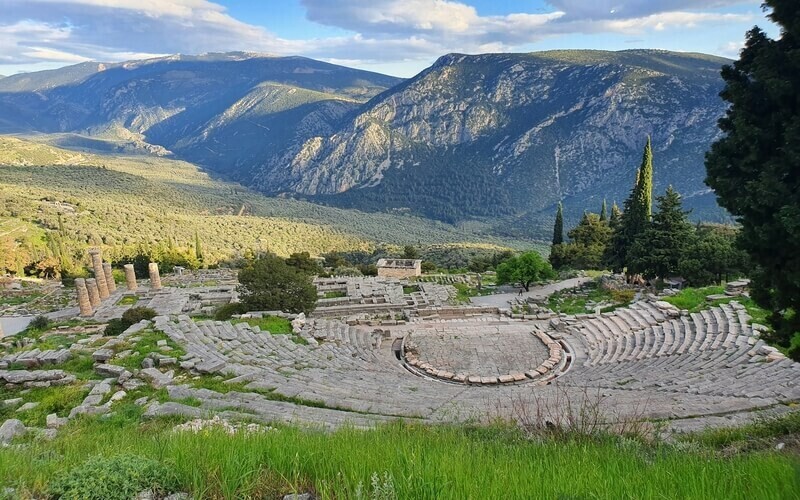
(Photo by Pavle Đurakić on Unsplash)
Located on the slopes of Mount Parnassus, Delphi was once considered the center of the world in ancient Greek mythology. It was home to the famous Oracle of Delphi, where people from all over the ancient world would come to seek advice from the god Apollo.
Today, Delphi is a UNESCO World Heritage site, offering visitors the chance to explore its well-preserved ruins, including the Temple of Apollo, the ancient theater, and the Stadium of Delphi, where the Pythian Games (second only to the Olympics) were held. The site is surrounded by breathtaking mountain scenery, making it one of the most dramatic archaeological sites in Greece.
The nearby Delphi Archaeological Museum houses a vast collection of artifacts found at the site, including the famous bronze statue of the Charioteer of Delphi.
Must-Do Activities:
- Visit the ruins of the Temple of Apollo and learn about the ancient Oracle.
- Explore the Delphi Archaeological Museum for insights into the site’s rich history.
- Hike the surrounding trails for stunning views of the mountains and valleys.
5) Meteora: Monasteries in the Sky
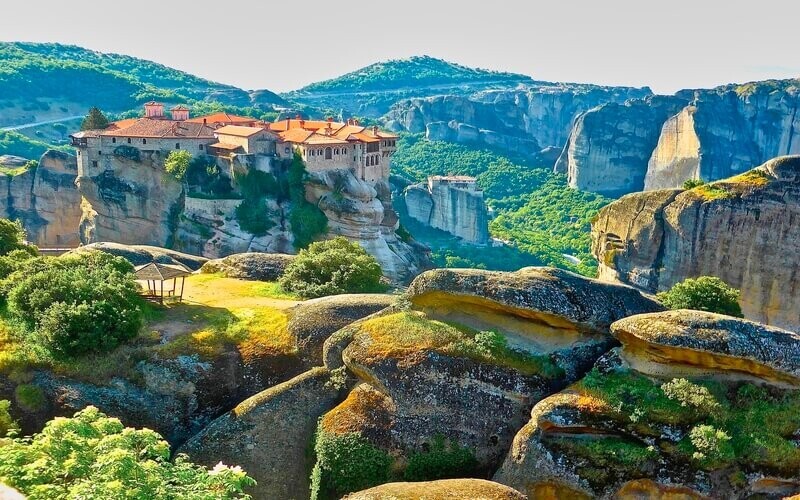
(Photo by Memory Catcher on Pixabay)
Meteora, meaning “suspended in the air,” is a stunning complex of monasteries perched on top of towering rock pillars. Located in central Greece, this UNESCO World Heritage site is both a geological marvel and a spiritual retreat.
Six of the original 24 monasteries are still in operation today and can be visited by tourists. These monasteries, built between the 14th and 16th centuries, seem to defy gravity as they cling to the steep cliffs. They were originally constructed by monks seeking isolation and spiritual enlightenment.
Visitors to Meteora can explore the monasteries, hike the surrounding trails, and enjoy breathtaking views of the rock formations and the plains of Thessaly below. The monasteries are filled with Byzantine frescoes, ancient manuscripts, and religious artifacts, offering a glimpse into Greece’s monastic traditions.
Must-Do Activities:
- Visit the six operational monasteries and admire their impressive frescoes and artifacts.
- Hike the trails around Meteora for panoramic views of the rock pillars and the monasteries.
- Watch the sunset from one of the viewpoints for a truly magical experience.
6) Crete: The Land of Myth and History
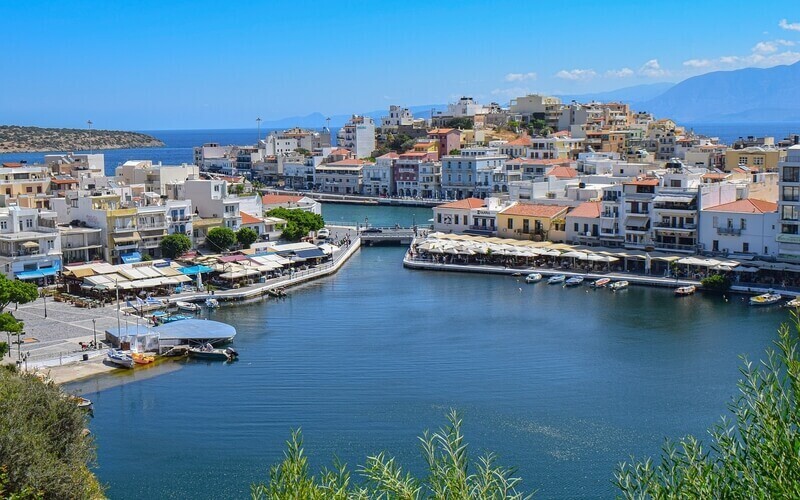
(Photo by Ben_Kerckx on Pixabay)
Crete, the largest of the Greek islands, is a destination filled with contrasts. From its stunning beaches to its rugged mountains, Crete offers visitors a taste of ancient history, rich culture, and natural beauty. It is also the legendary birthplace of Zeus, the king of the Greek gods, and home to the ancient Minoan civilization.
The island’s most famous archaeological site is the Palace of Knossos, once the ceremonial and political center of the Minoans. The ruins of this palace are filled with frescoes, grand staircases, and the famous Labyrinth of the Minotaur—according to legend, this was where King Minos kept the mythical creature.
Beyond Knossos, Crete is home to beautiful beaches like Elafonissi Beach, known for its pink sand, and Balos Lagoon, a pristine beach with shallow, turquoise waters. The Samaria Gorge is another natural wonder, offering one of Europe’s longest hiking routes through dramatic cliffs and scenic landscapes.
Must-Do Activities:
- Explore the Palace of Knossos and dive into Minoan history and mythology.
- Relax on the pink sands of Elafonissi Beach or visit the scenic Balos Lagoon.
- Hike the Samaria Gorge for an adventurous day immersed in nature.
7) Rhodes: The Island of Knights
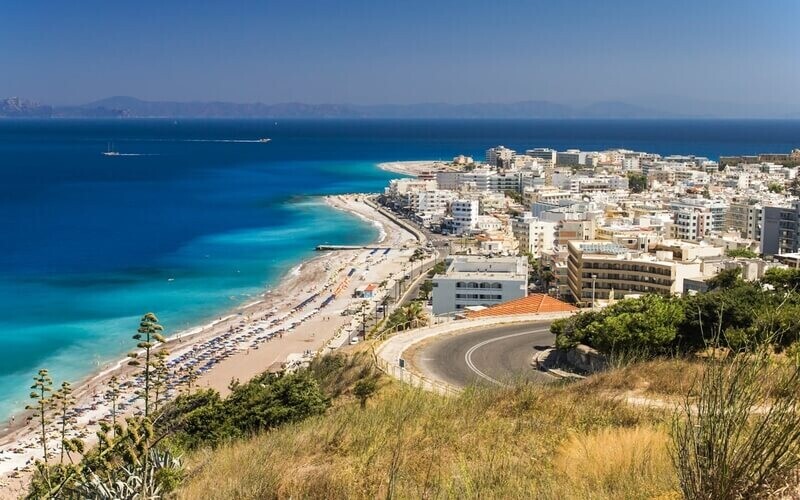
(Photo by Erik Karits on Pexels)
Rhodes, located in the Dodecanese island group, is steeped in history and known for its well-preserved medieval town. The Old Town of Rhodes is a UNESCO World Heritage site, and it feels like stepping back in time with its cobbled streets, ancient walls, and the imposing Palace of the Grand Master. Rhodes was once home to the Colossus of Rhodes, one of the Seven Wonders of the Ancient World.
Wander through the medieval streets, explore the palace, and visit the Street of the Knights, a long road lined with the residences of the Knights of St. John. Beyond the historical town, Rhodes also offers beautiful beaches like Faliraki and Anthony Quinn Bay, and ancient ruins such as the Acropolis of Lindos.
Must-Do Activities:
- Explore the Palace of the Grand Master and the medieval streets of Rhodes Town.
- Relax on the beaches of Faliraki or Anthony Quinn Bay.
- Visit the Acropolis of Lindos for stunning views of the Aegean Sea.
8) Thessaloniki: The Cultural Capital
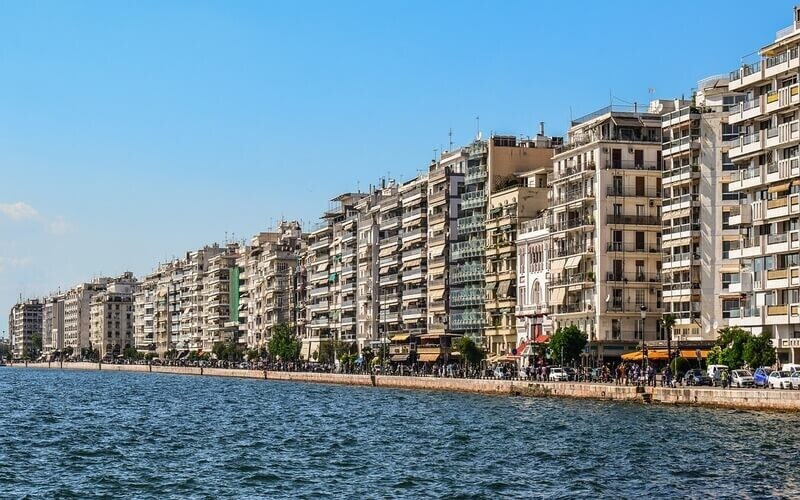
(Photo by Dimitris Vetsikas on Pixabay)
Thessaloniki, Greece’s second-largest city, is often referred to as its cultural capital. Located in northern Greece, this vibrant city offers a rich blend of history, culture, and modern life. From Byzantine churches to Ottoman architecture, Thessaloniki is a melting pot of different influences.
One of the city’s most famous landmarks is the White Tower, a 15th-century Ottoman tower that now houses a museum. Other notable sites include the Rotunda of Galerius, a massive Roman monument, and the Arch of Galerius. The city is also home to several important Byzantine churches, including Hagia Sophia and Agios Demetrios.
Thessaloniki’s waterfront is a hub of activity, lined with cafes, bars, and restaurants, making it the perfect place to enjoy the city’s vibrant nightlife. The city is also a gateway to nearby attractions, including the stunning beaches of Halkidiki and the historical site of Vergina, where the tomb of Philip II, father of Alexander the Great, was discovered.
Must-Do Activities:
- Visit the White Tower and learn about the city’s Ottoman past.
- Explore the ancient Rotunda and the Arch of Galerius.
- Take a day trip to the beautiful beaches of Halkidiki.
9) Nafplio: Greece’s Romantic Town
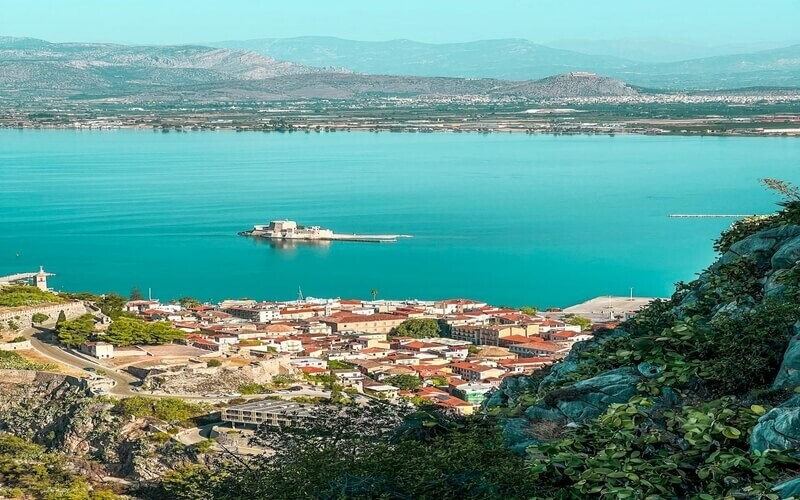
(Photo by Effraimidou Georgia on Pexels)
Known as one of the most romantic towns in Greece, Nafplio is located in the eastern Peloponnese. It was the first capital of modern Greece after the country gained independence in the 19th century. The town is famous for its charming old town, Venetian architecture, and stunning harbor views.
Nafplio is home to the impressive Palamidi Fortress, a massive Venetian-built fortress perched high on a hill overlooking the town. The climb to the top (over 1,000 steps!) is worth it for the panoramic views of the sea and surrounding landscape. The town also has a beautiful promenade along the waterfront and several beaches, including Arvanitia Beach.
Must-Do Activities:
- Climb to the top of Palamidi Fortress for incredible views of Nafplio and the sea.
- Wander through the narrow streets of the old town and admire the Venetian architecture.
- Relax on Arvanitia Beach or take a boat to nearby Bourtzi Castle.
10) Zakynthos: The Jewel of the Ionian Sea
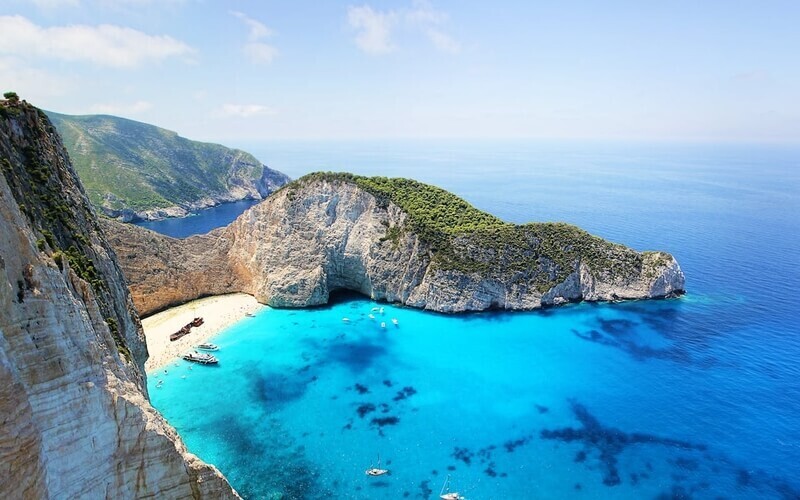
Located in the Ionian Islands, Zakynthos (also known as Zante) is famous for its stunning beaches and vibrant nightlife. The island’s most iconic spot is Navagio Beach (Shipwreck Beach), a secluded cove with white sands, crystal-clear waters, and the wreck of a ship that ran aground in the 1980s.
Zakynthos is also home to incredible sea caves, including the Blue Caves, where the water is an intense shade of blue due to the reflection of the sunlight. The island is a nesting ground for the endangered Caretta Caretta sea turtles, and visitors can take boat trips to see them in their natural habitat around Laganas Bay.
Must-Do Activities:
- Visit Navagio Beach and see the famous shipwreck in person.
- Explore the Blue Caves and swim in the vibrant blue waters.
- Take a boat trip to Laganas Bay and watch the sea turtles swim.
Unique Facts
- Greece Has Over 6,000 Islands: Greece is made up of more than 6,000 islands and islets scattered across the Aegean and Ionian Seas, but only about 227 of them are inhabited. This makes Greece one of the most island-rich countries in the world, with endless opportunities to discover hidden gems, from famous destinations like Santorini and Mykonos to lesser-known gems like Symi and Koufonisia.
- The Greek Alphabet is Over 2,500 Years Old: The Greek alphabet is one of the oldest in the world still in use today. It dates back over 2,500 years and has influenced many other writing systems, including the Latin alphabet.
- More Than 80% of Greece is Mountainous: Greece is one of the most mountainous countries in Europe. Mount Olympus, the highest peak at 2,917 meters (9,570 feet), was considered the home of the ancient Greek gods.
Conclusion: Greece – A Journey Through Time
Greece is a land where ancient history, vibrant culture, and natural beauty converge. From the ancient wonders of Athens and Delphi to the stunning islands of Santorini, Mykonos, and Zakynthos, Greece offers endless opportunities for exploration. Whether you’re wandering through centuries-old ruins, basking in the sun on a pristine beach, or hiking through dramatic landscapes, Greece promises an unforgettable adventure.
“In Greece, every corner whispers ancient stories, and every horizon promises new adventures.“

